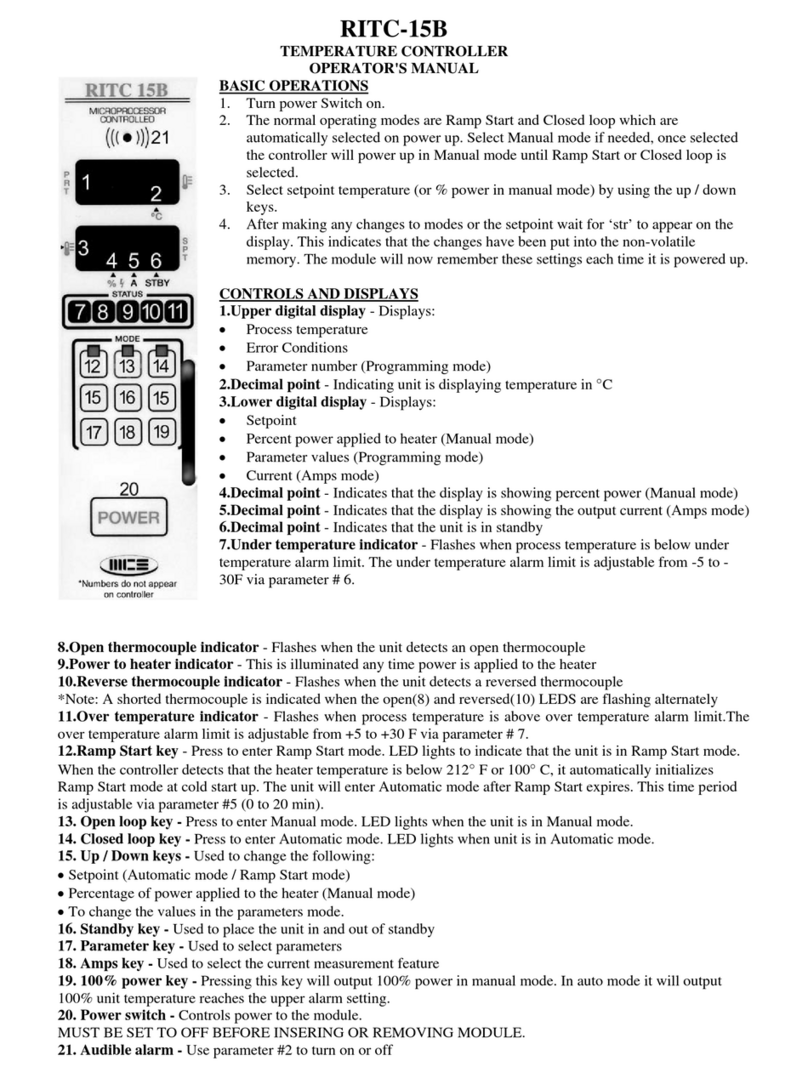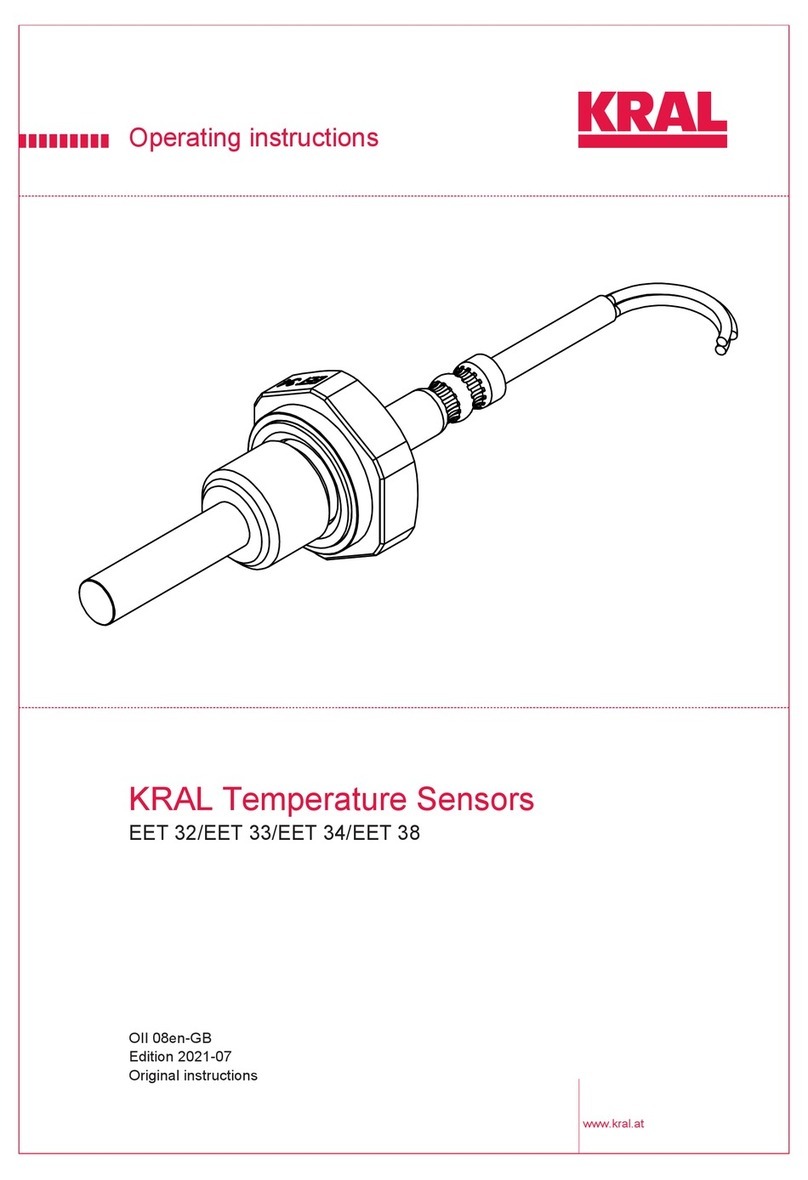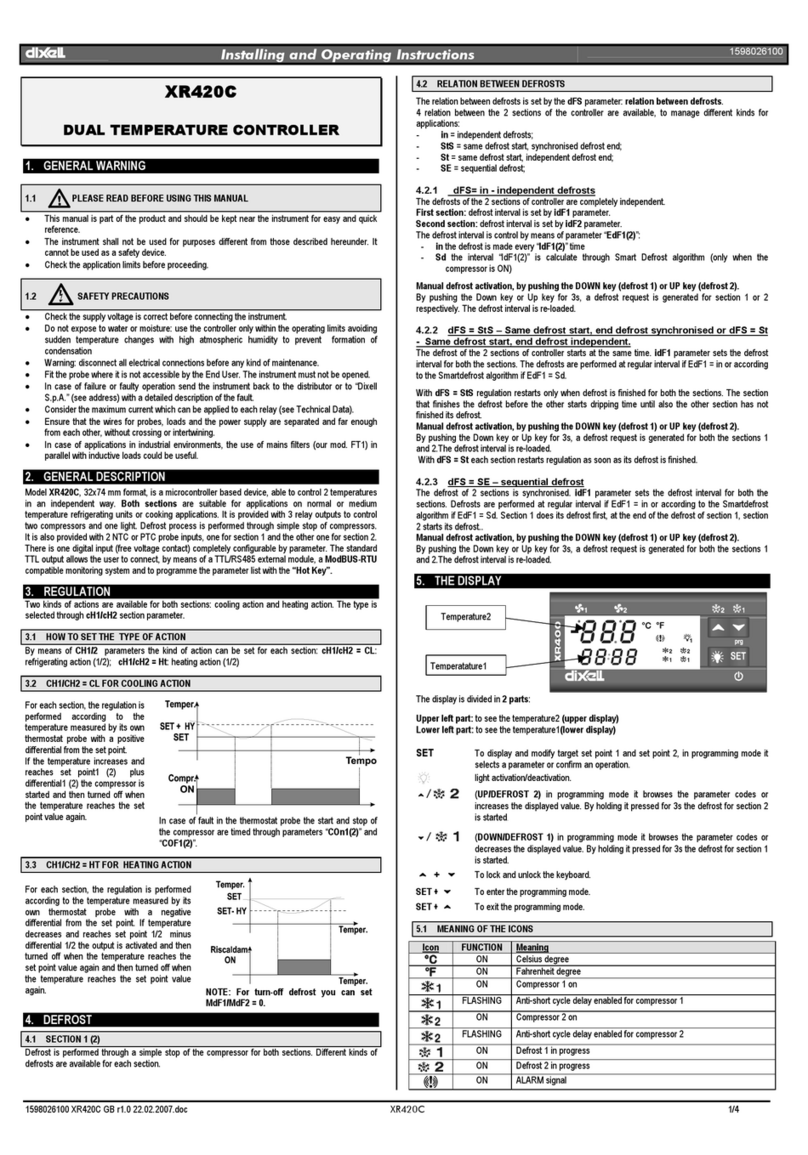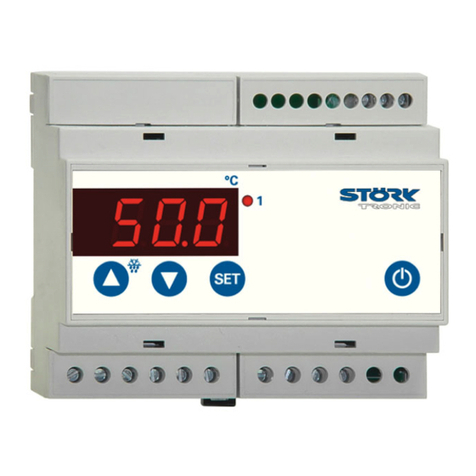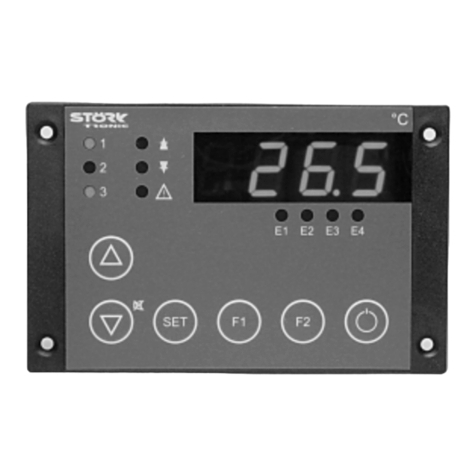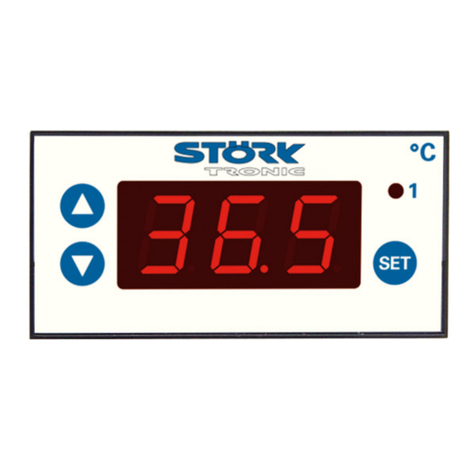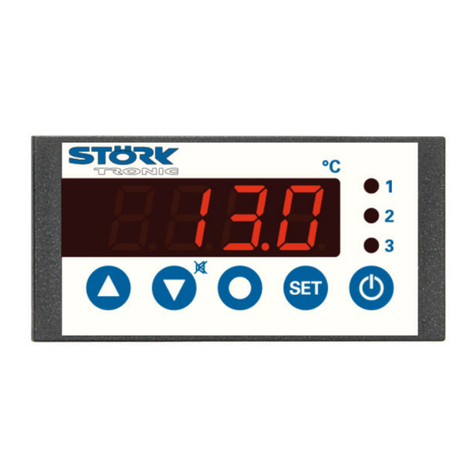
Second control level (P parameters):
Setting of control parameters
Simultaneously pressing the UP and DOWN key for at least 4 seconds opens a parameter list
containing control parameters. With the UP and DOWN keys the list can be scrolled in both
directions. Pressing the SET key will give you the value of the respective parameter. Pressing also
the UP or DOWN key at the same time the value can be adjusted.
Return to the initial position takes place automatically, if no key is pressed for 60 seconds.
Para-
meter Function description Adjustment range Standard
setting Custom
setting
P1 Setpoint 2 or
Delta W -99 ... 999°C
-99 ... 99.9 K
+10.0 K
P2 Hysteresis contact K1 0.1 ... 99.9 K 1.0 K
P3 Hysteresis contact K2 0.1 ... 99.9 K 1.0 K
P4 Control range limitation –
minimum difference value -99°C ... P5 -99°C
P5 Control range limitation –
maximum difference value P4 ... 99,9°C 99,9°C
P7 Proportional band 0.1 ... 99.9 K 15.0 K
P8 Reset time Tn, I-factor 0...999 sec.
(0 sec. = inactive) 500 sec.
P9 Lead time Tv, D-factor 0...999 sec.
(0 sec. = inactive) 50 sec.
P10 Cycle time 2...100 sec. 8 sec.
P19 Key-lock 0: no key-lock
1: key-lock 0
P20 Following value display ----- -----
P21 Following value correction -10.0 ... 10.0 K 0.0 K
P22 Leading value display ----- -----
P23 Leading value correction -10.0 ... 10.0 K 0.0 K
P30 Lower limit value of the following
value for alarm contact -99°C/K...P31 -10 K
P31 Upper limit value of the following
value for alarm contact P30...999°C/K +10.0 K
P32 Hysteresis alarm contact 0.1 ... 99.9 K 1.0 K
P33 Lower range limitation for fixed
setpoint control -99 ... 999°C -99°C
P34 Upper range limitation for fixed
setpoint control -99 ... 999°C 999°C
P40 Analogue output 0: PID-control value (P43-P45)
1: following value (P41, P42)
2: leading value (P41, P42)
0
P41 Indication value for 0V at
analogue output -99...999°C 0°C
P42 Indication value for 10V at
analogue output -99...999°C 100°C
P43 Indication value full heating
performance (100%) -10.0 ... +10.0 V +10.0 V
P44 Indication value "0" performance -10.0 ... +10.0 V 0.0 V
P45 Indication value full cooling
performance (100%) -10.0 ... +10.0 V 0.0 V



